Error message
Conference participants were able to choose from one of the five workshops offered on Wednesday, September 17th 11:00 am – 12:30 pm.
*Limited space available for each workshop. Participation for the workshop will be first-come, first-served basis.
Workshop 1 - Shisa Face Pottery Making
Maximum number of participants: 40
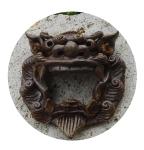
Your work will be sent to you upon request (with baking and shipping fee).
Workshop 2 - Okinawan-style Tea Ceremony (Buku-buku cha)
Maximum number of participants: 50
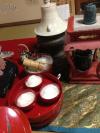
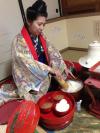
Workshop 3 - Okinawan-style Kimono Wearing
Maximum number of participants: 40
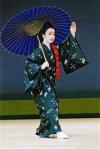
Please bring your own camera for those who wish to take souvenir photos!
Workshop 4 - Okinawan-style Spontaneous Dance (kacha-si-)
Maximum number of participants: 80
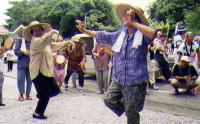
Workshop 5 - Okinawan Three-String Instrument (Sanshin)
Maximum number of participants: 30
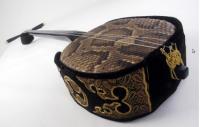
Image credits:
Shisa face pottery making sample work 1, http://www.ikutouen.com
Okinawan-style tea ceremony (buku-buku cha) (left) Buku-buku cha utensils. (right) making buku-buku cha, http://niraidai.net/special/56
Okinawan-style kimono wearing, Okinawa Prefectural University of Arts, http://www.okigei.ac.jp
Okinawan-style spontaneous dance (kacha-shi-), http://blogimg.goo.ne.jp/user_image/71/d2/c5cd144b2ce2da1fcba7022af00db8c8.jpg
Okinawan three-strings instrument (Sanshin), Collection of Museo Azzarini, Universidad Nacional de La Plata/Wikimedia Commons http://upload.wikimedia.org/wikipedia/commons/8/86/Sanshin.png
Disclaimer: This document claims no credit for any images used. Images on this document are copyright to its respectful owners and the person/entity who created the photos.
Conference participants were able to choose from one of the five workshops offered on Wednesday, September 17th 11:00 am – 12:30 pm.
*Limited space available for each workshop. Participation for the workshop will be first-come, first-served basis.
Workshop 1 - Shisa Face Pottery Making
Maximum number of participants: 40

Your work will be sent to you upon request (with baking and shipping fee).
Workshop 2 - Okinawan-style Tea Ceremony (Buku-buku cha)
Maximum number of participants: 50


Workshop 3 - Okinawan-style Kimono Wearing
Maximum number of participants: 40

Please bring your own camera for those who wish to take souvenir photos!
Workshop 4 - Okinawan-style Spontaneous Dance (kacha-si-)
Maximum number of participants: 80

Workshop 5 - Okinawan Three-String Instrument (Sanshin)
Maximum number of participants: 30

Image credits:
Shisa face pottery making sample work 1, http://www.ikutouen.com
Okinawan-style tea ceremony (buku-buku cha) (left) Buku-buku cha utensils. (right) making buku-buku cha, http://niraidai.net/special/56
Okinawan-style kimono wearing, Okinawa Prefectural University of Arts, http://www.okigei.ac.jp
Okinawan-style spontaneous dance (kacha-shi-), http://blogimg.goo.ne.jp/user_image/71/d2/c5cd144b2ce2da1fcba7022af00db8c8.jpg
Okinawan three-strings instrument (Sanshin), Collection of Museo Azzarini, Universidad Nacional de La Plata/Wikimedia Commons http://upload.wikimedia.org/wikipedia/commons/8/86/Sanshin.png
Disclaimer: This document claims no credit for any images used. Images on this document are copyright to its respectful owners and the person/entity who created the photos.

